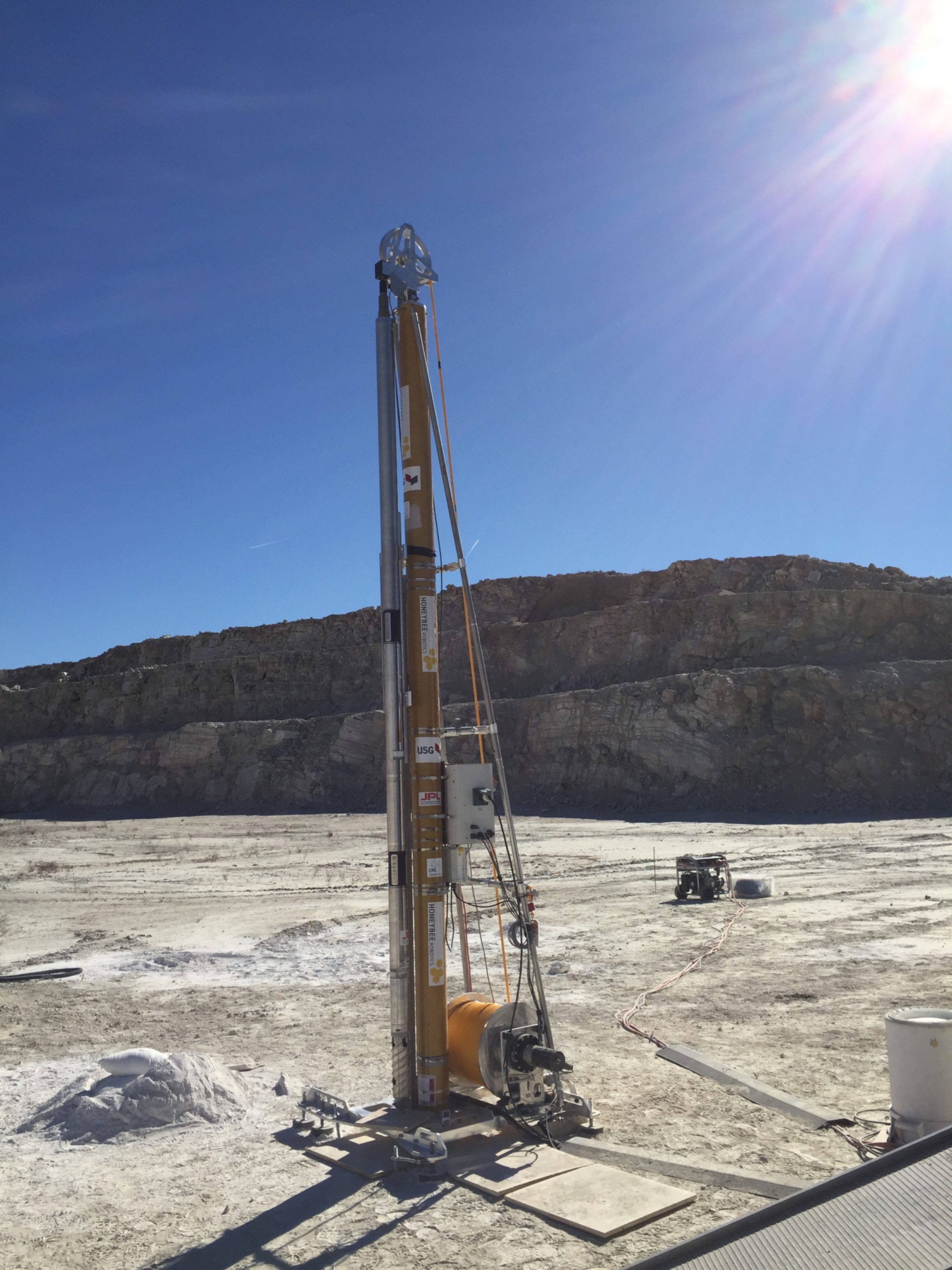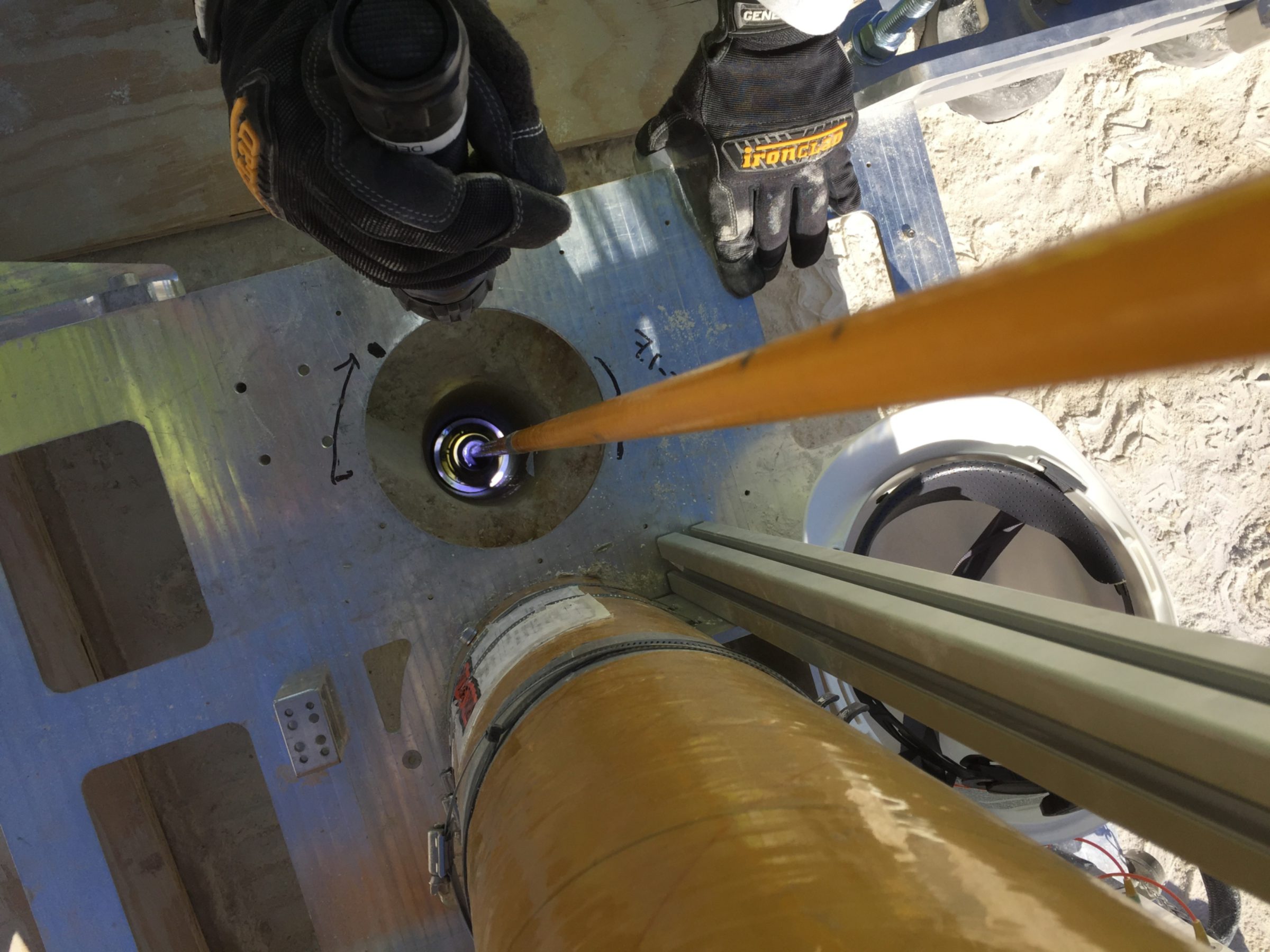Jason Davis • Jan 18, 2019
Planetary Deep Drill completes second field test
Honeybee Robotics has successfully completed a second round of testing on a next-generation drill that might one day burrow deep beneath icy planetary surfaces. The work, which took place in December 2018, builds on a 2015 Planetary Society-sponsored test, and paves the way for an ambitious drilling expedition in Greenland this year.
Planetary Deep Drill
Planetary Deep Drill is designed to explore tens, hundreds or even thousands of meters below the Martian polar ice caps and Europa's icy crust.
Project update
For its second major round of field tests, Honeybee Robotics returned to a gypsum quarry owned and operated by United States Gypsum Corporation in southern California. Gypsum has a consistency similar to cryogenic ice, the material Deep Drill eventually hopes to chew through on Mars or Europa.
What began as a single-drill project has evolved, and Honeybee is now testing two drills: Auto-Gopher-2 and WATSON, which stands for Wireline Analysis Tool for Subsurface Observation of Northern ice sheets.
NASA's Jet Propulsion Laboratory, under a team led by Yosi Barr-Cohen, contributed Auto-Gopher-2's percussive drilling system. Another JPL team led by Rohit Bhartia provided a simplified, cylindrical version of the Mars 2020 SHERLOC instrument for WATSON. Both SHERLOC and its WATSON counterpart are deep UV Raman and fluorescence spectrometers that can map the distribution of organics to search for signs of life.

During the December tests, Auto-Gopher-2 drilled a 7.5-meter borehole, which engineers also used to perform operational readiness tests for WATSON. WATSON can use its gripping shoes to "inch-worm" on the sides of the borehole, which is important in order to precisely position the spectrometer for fine-scale borehole scanning. This is more precise than relying solely on the drill tether, which rotates and stretches, says Kris Zacny, the director of Honeybee's exploration technologies group. He said another advantage of inch-worming is to save time by taking multiple "bites" when drilling until the auger fills up with sampled cuttings, which greatly saves time when working in a hole that is hundreds of meters deep.
"We spent a lot of time doing drill automation," Zacny said. "It can work on its own in the hole. This approach is ideal for a hole on Mars." Scientists recently discovered a possible subsurface lake near Mars' south pole, estimated to be 1.5 kilometers beneath the surface.
Zacny and Bhartia said the California trials were a success, and pave the way for an upcoming trip to Greenland. In June 2019, the team plans to take WATSON to the highest point on the Greenland ice sheet: a collection of research stations known as the Summit. There, engineers will lower WATSON into an existing 80-meter-deep borehole, and command it to drill up to an additional 20 meters while scanning the ice for biosignatures and living organisms.
Auto-Gopher-2 was funded by the NASA Maturation of Instruments for Solar System Exploration (MatISSE) Program, and WATSON was funded by the NASA Planetary Science and Technology Through Analog Research Solicitation (PSTAR) program.
Here are some specifics on each drill:
Auto-Gopher-2
- Drill length: 3.3 meters
- Tether length: 120 meters
- Mass: 70 kilograms
- Power consumption: less than 500 Watts
- Percussive system: JPL-designed piezoelectric hammer
WATSON
- Drill length: 2.7 meters (4.0 meters with instrument)
- Tether length: 120 meters
- Mass: 65 kilograms
- Power consumption: less than 500 Watts
- Percussive system: Honeybee-designed Cam & Follower
- Science instrument: Simplified and repackaged version of Mars 2020 SHERLOC

Support our core enterprises
Your support powers our mission to explore worlds, find life, and defend Earth. You make all the difference when you make a gift. Give today!
Donate

 Explore Worlds
Explore Worlds Find Life
Find Life Defend Earth
Defend Earth


